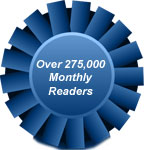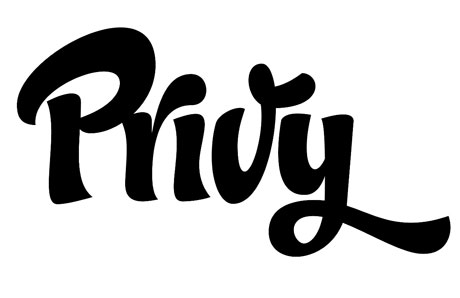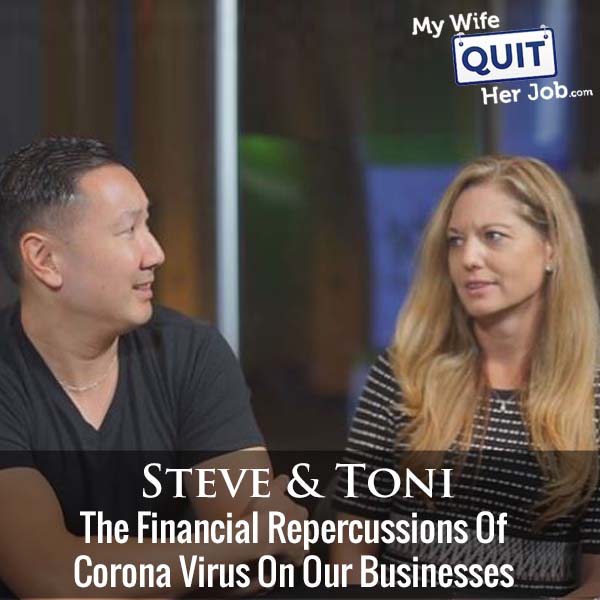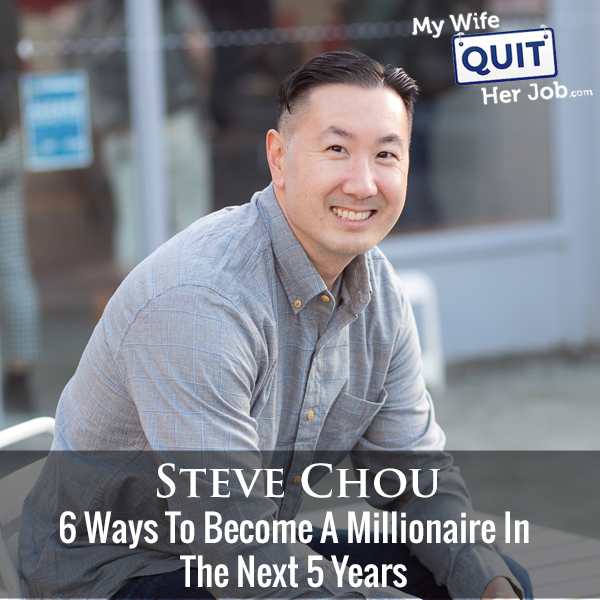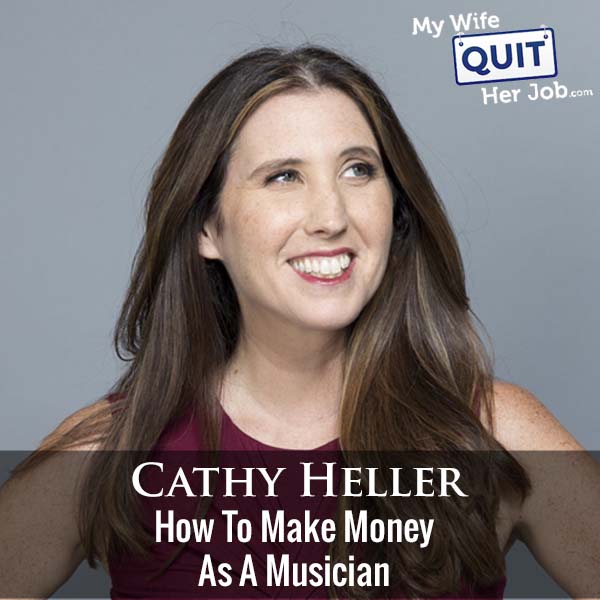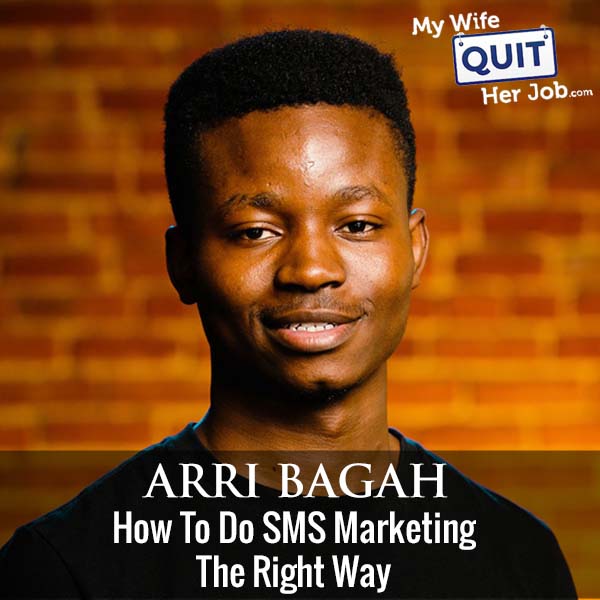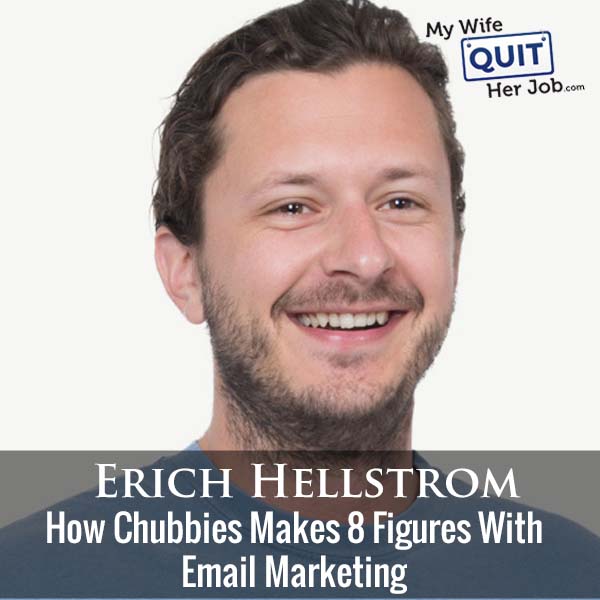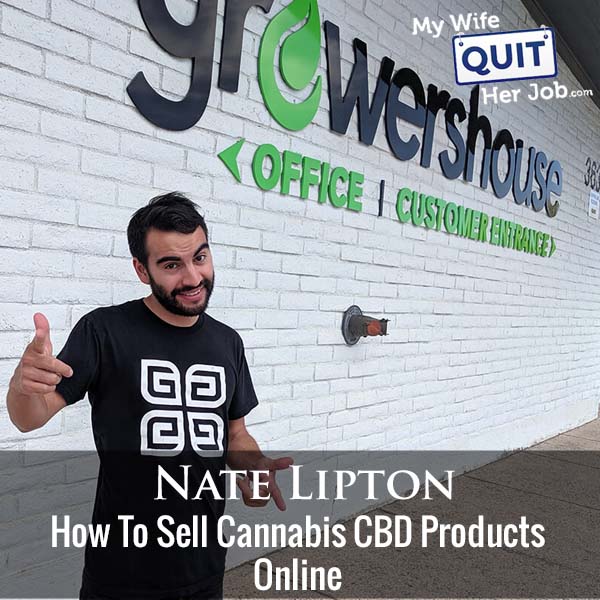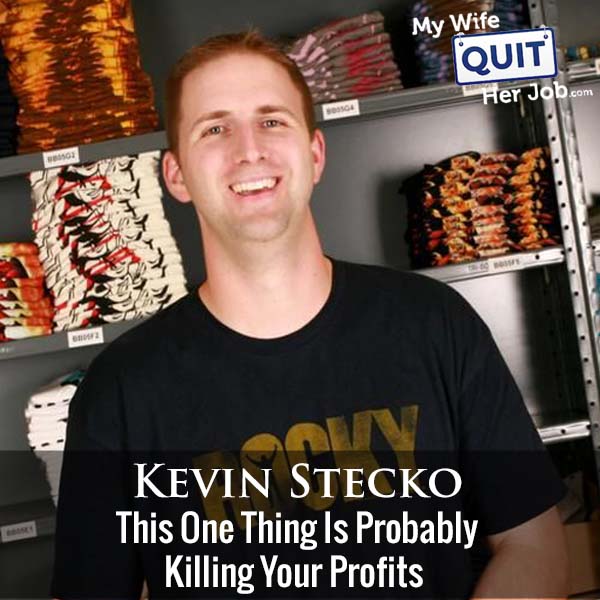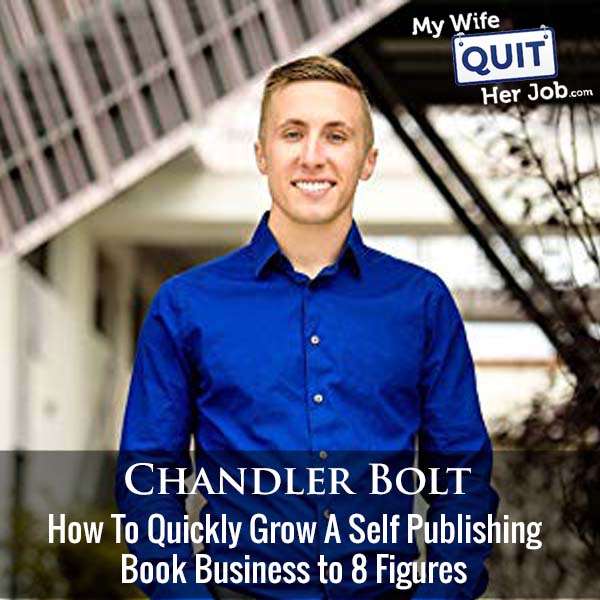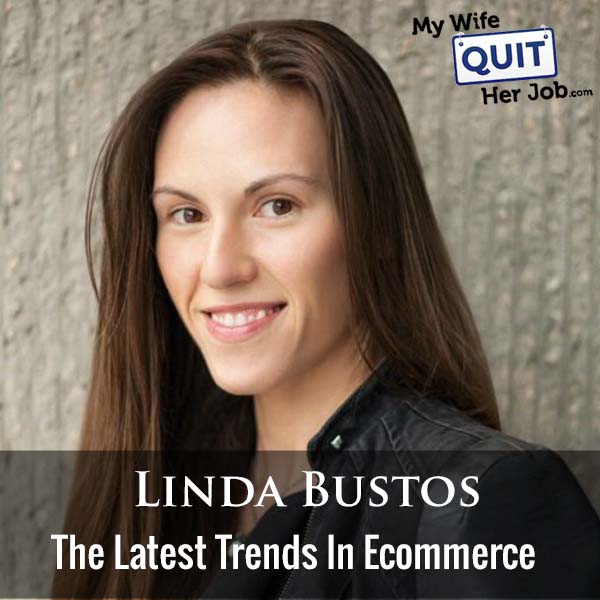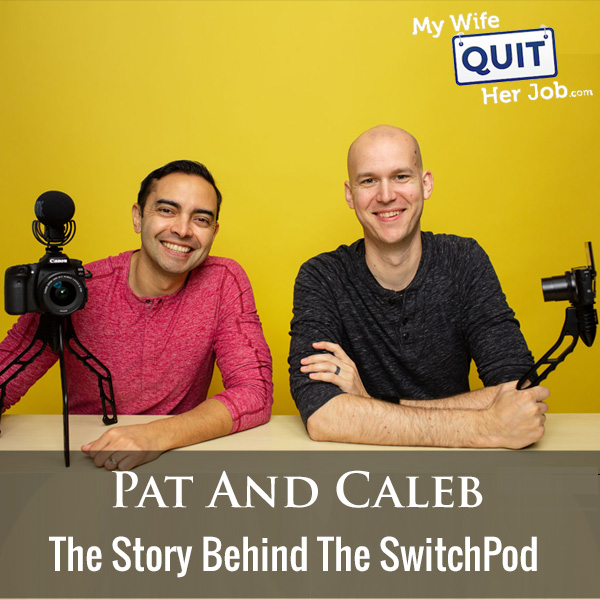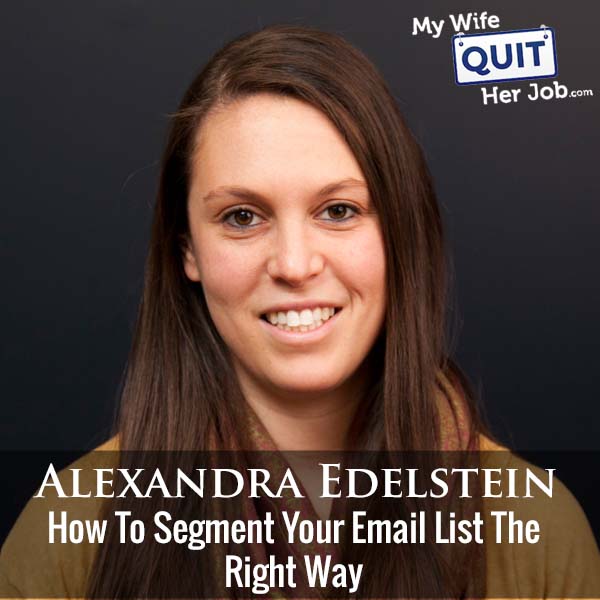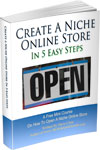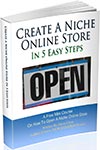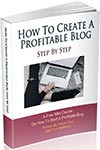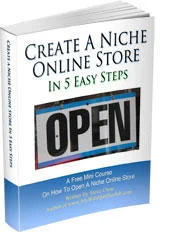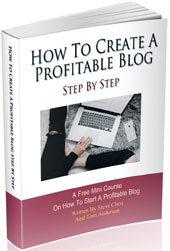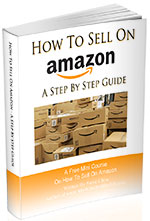Podcast: Download (Duration: 41:22 — 47.6MB)
Today I’m really happy to have Sally Wilson on the show. Sally is a student in my Create A Profitable Online Store Course, she resides in the UK and she sells cross stitch supplies over at CaterpillarCrossstitch.com.
Sally has been a joy to have in the class and in this episode, she tells us her story and reveals how she has managed to generate all of her sales.
What You’ll Learn
- How Sally got started with crossstitching
- Sally’s motivations for starting her business
- How Sally validated her niche before she began
- How Sally generates sales
- How Sally built an audience.
Other Resources And Books
Sponsors
Klaviyo.com – Klaviyo is the email marketing platform that I personally use for my ecommerce store. Created specifically for ecommerce, it is the best email marketing provider that I’ve used to date. Click here and try Klaviyo for FREE.
Privy.com – Privy is my tool of choice when it comes to gathering email subscribers for my ecommerce store. They offer easy to use email capture, exit intent, and website targeting tools that turn more visitors into email subscribers and buyers. With both free and paid versions, Privy fits into any budget. Click here and get 15% OFF towards your account.
EmergeCounsel.com – EmergeCounsel is the service I use for trademarks and to get advice on any issue related to intellectual property protection. Click here and get $100 OFF by mentioning the My Wife Quit Her Job podcast.
SellersSummit.com – The ultimate ecommerce learning conference! Unlike other events that focus on inspirational stories and high level BS, the Sellers Summit is a curriculum based conference where you will leave with practical and actionable strategies specifically for an ecommerce business. Click here and get your ticket now before it sells out.
Transcript
Now, it’s been a while since I’ve talked about successful students in my e-commerce course, so this month I’m going to be having a bunch of six and seven-figure students from my class on the podcast. And today, I’m happy to have Sally Osborne on the show and she sells cross stitch kits online over at caterpillarcross-stitch.com. And she’s an amazing woman as you’ll soon find out and we are going to learn how she became successful.
But before we begin I want to give a quick shout-out to Privy who’s a sponsor of the show. Privy is a tool that I use to build my email list for both my blog and my online store and right now I’m using Privy Display a cool Wheel of Fortune pop-up basically user gives your email for a chance to win valuable prizes in our store and customers love the gamification aspect of this and when I implemented this form email signups increased by a hundred thirty one percent. Privy also offers a low-cost email solution for e-commerce Merchants. So if all you need are the basic email autoresponder sequences, like abandoned cart went back campaigns pre and post purchase flows. Then Privy might be an ideal solution for you. So bottom line, Privy allows you to turn the visitors into email subscribers and recover lost sales. So head on over to preview.com Steve and try it for free. And if you decide you need some of the more advanced features use coupon code MWQHJ for 15% off. Once again, that’s PRIVY.com/Steve
But before we begin I want to thank Klaviyo for sponsoring this episode. Klaviyo is the email marketing platform that I personally use for my e-commerce store and I depend on them for over thirty percent of my revenues. Klaviyo is the only email platform out there that is specifically built for e-commerce stores and here’s why it’s so powerful. Klaviyo can track every single customer who shopped in your store in exactly what they bought so let’s say I want to send an email to everyone who’s purchased a Red handkerchief in the last week, easy. Let’s say I want to set up a special autoresponder sequence to my customers depending on what they bought, piece of cake and there’s full Revenue tracking on every single email sent now Klaviyo is most powerful email platform that I’ve ever used and you can try them for free over at mywifequitherjob.com/Klaviyo. Once again, That’s my mywifequitherjob.com/Klaviyo.
Intro: Welcome to the My Wife Quit Her Job Podcast. We will teach you how to create a business that suits your lifestyle so can spend more time with your family focus on doing the things that you love. Here’s your host Steve Chou.
Steve: Welcome to the My Wife Quit Her Job podcast today. I’m really happy to have Sally Osborne on the show. Now, Sally is a student in my creative profitable online store course and she resides in the UK and she’s been an absolute joy to work with in the class. She is an avid cross stitcher and she sells cross-stitch supplies over at caterpillarcrossstitch.com and she’s been doing quite well. So, I decided to bring her on the show to tell her story and reveal how she has managed to generate all of her sales and with that, welcome to show Sally. How are you doing today?
Sally: I’m good. Thank you. You?
Steve: I’m very good. I’m so glad that we could get this rescheduled. I know that things are really hectic for you over the holidays, which I assume is a good thing.
Sally: Yeah, definitely good.
Steve: And you know a holiday season is really busy for us too, so it all worked out.
Sally: Yeah.
Steve: So Sally, please tell the audience about your store, what you sell and how you got started.
Sally: Okay, so my business is called Caterpillar Cross Stitch and we sell modern cross stitch kits. Some cross-stitch patterns and magnetic needle minders which are an essential for all stitches and then some other accessories as well to go with stitching like, project bags, pins. All kinds of bits and pieces. So, it’s been going for just about four years.
Steve: Oh, wow. I didn’t realize it’s been a long. Holly.
Sally: We just had… Not full-time, but just had four years for your birthday.
Steve: Nice.
Sally: But in that time, I have had two children. So, it’s only been the last year really that it’s been full-on concentrated.
Steve: Hahaha. Okay, and are these supplies of your own design or are you searching from somewhere?
Sally: So yeah, I design absolutely everything myself. So, everything is made especially for the brand. Nothing’s white labeled. So, it takes longer and everything is made by hand and it’s unique but that is our USP.
Steve: I see. So, everything is made by hand meaning you package everything?
Sally: All of it. Yes.
Steve: Oh okay. Wow!
Sally: Everything’s done in-house by the team. All of the designs done by me and no one else has the designs. You can’t buy them anywhere else. And then, there’s no competition in that sense. Like there are other cross stitch designers and kits and things but, some of them and the other websites do sell all kinds of other brands and other companies and they all kind of sell the same thing. So, my designs are exclusive to the website and then all of the other items like the needle minders and the bags are all designed by me. And we have all the stock and do everything here.
Steve: That is incredible. So, in terms of you mentioned team, how many members do you have?
Sally: So, there’s me and I tend to work. Well, it’s pretty much full-time if you actually add up all the hours. But it’s only three days in the week and then there’s three other part-time workers.
Steve: Okay. Yeah because you have kids…
Sally: But that counts my husband.
Steve: Yep.
Sally: Yes. Hahaha.
Steve: Do you count your husband as a kid too? Or… Hahaha.
Sally: Well, no hahaha. So, he… I sort of rope him in as often as I can, but he works full time. He’s an engineer…
Steve: Oh, he’s an… Okay, perfect.
Sally: Yeah, I keep saying to him that you left your job and did this with Jen and I’m like, “When are you going to quit?” He actually doesn’t want to; he loves his job so…
Steve: I did too actually and so I was just doing all the tech stuff on the side. I didn’t actually quit until I had my own thing. Just kind of completely by myself…
Sally: Yeah.
Steve: So, I understand how he feels. So, in terms of the materials like… So all the designs are yours, but in terms of the materials, are you sourcing those locally? Overseas?
Sally: So with the needle minders, they’re made in China. And the bank’s actually come from a factory in China as well.
Steve: Okay, and in terms of finding those vendors, did you actually go travel to China? Or do you use Alibaba?
Sally: I used Alibaba. I remember from your course saying, you know, you needed to be persistent and all the tips you gave us. So it does take a long time and a lot of patience and finding the right person and I think just communicating effectively exactly what you want and being really specific with the design and the spec because some of it can sort of get lost in translation, sometimes. But once I found sort of reliable and great factories and contacts there, it’s been okay, actually. So, with repeat orders and once they know what they’re doing I sent over the new designs… Or if there’s a new product and you know work together to develop it. So, it’s gets easier as it goes on.
Steve: What were your challenges during that phase, when you were looking for suppliers?
Sally: It wasn’t too bad to find suppliers. I probably tried to contact maybe five or six. Different companies from Alibaba. Looked at their reviews and how long they’ve been trading and things. But a few of the problems have just been like materials. So, in terms of the metal that’s used for the needle minders, which is essentially an enamel. Imagine like an enamel pin. It’s like that but magnetic there’s a magnet on the back, but it has to be a certain thick and brass alloy and it can’t have any other metals in it. Otherwise, the piece itself becomes magnetic and defeats the purpose. So, I did have probably 1200 of them shipped to England and they were all wrong.
Steve: Oh… Did you end up eating that cost? Or…
Sally: No, they replaced everything but it took another month. We’ve had some, where the magnets like again or probably a thousand. All the magnets came off but, not before I shipped them out, only after I ship them out. So, I then had to bear the cost of replacing them all. All the postage costs. So that was a bit of a nightmare, but generally it’s all been okay. So, I think we’ve got over the hurdle so far now.
Steve: Okay, are you using inspectors now or do you trust your vendor enough?
Sally: We just go for it now. Today sounds awful, I don’t even get samples. I just go for it because they’re not huge items. They’re not… It’s not like the sort of $50 or $100 they’re quite small and the people are so good that if there is a problem they tend to replace them for free. And in terms of the time I’d prefer to have the turnaround quicker. Get them advertised, get them sold, get them out there and I do a lot of pre-order as well. So, people will buy all of the needle minders up front and then they’ll be shipped out three weeks later. So, I’m quite hot on getting it turn around as quickly as possible and out the door.
Steve: That makes sense. And then these vendors that you deal with, how do you communicate with them? Is it through WeChat? Skype? Email?
Sally: Email. Just email.
Steve: Cool. Have you met them? Have you gone to China to meet them at all? Or it’s just…
Sally: No, I’ve never been. I’d like to go but, to be honest there isn’t really much… I don’t need to go and there’s only a few products. It’s only like the enamel metal factories, the magnet Factory and then like the fabric canvas bag factory. So, it’s kind of a standard product and I think everyone knows what they’re doing so… Maybe one day but with the kids and stuff at home right now, I don’t really get a lot of time.
Steve: Yeah, it’s tough. I’m lucky to have you on this interview and I know their bedtime is pretty soon.
Sally: Yeah, it’s nearly half 6:00 at night. So, yeah.
Steve: So, before you decided to invest in this, how did you know that your items were going to sell? Like, how did you validate your niche?
Sally: Well I spoke to you about it many times. So, what I did if you want to sort of a bit of background, so I trained as a lawyer and practice law for years and then it probably been about eight or nine years. And then when I had my first child, I was on maternity leave and I had a year. Which I know is a lot longer than some people get in America that I thought right? I’ve only got a year to figure out what am I going to do because I thought this is my opportunity and I had been reading your blog for years My Wife Quit Her Job and I thought, right… I’ve got to do it.
So, I think my daughter was about five months. I did your course every nap time every morning every evening and went through probably about six different, ideas different options spent a lot of time on keywords and market samurai and speaking to you and I’d always loved crafts. I’d always been quite creative. I think that’s what I was missing with law and everything just kind of fit in, really.
I probably I did sell some patterns on eBay, but that wasn’t really sort of the target audience anyway, and I was wanting to go for the full kit. So, the full package with threads and needle and fabric and pattern and everything you need ready to get going. But they sold really well just the printed patterns that was on eBay and I did loads of research on Facebook. So, I found out that there was like 50 plus Facebook groups dedicated to cross stitching there is about seven different cross-stitching magazines. Loads of what they call floss tube channels. So, it’s YouTube and the cotton thread in England in America is called floss. So, everyone has lots of channels.
So, it was more I did do the specifics and I did run the numbers but it was more of a feeling which I sort of pondered over for probably three months and it was a general feeling of actually… This community is underserved. It’s really passionate. It kind of ticked every box. I got to design stuff make stuff with my hands the people that bought the products, continue to buy them. It’s not a one-time purchase and then you don’t see them again and it’s a real community feel. It’s not just I don’t know like a mug or something. It’s the stitching can take one month; it can take six months. They will have them up in their houses forever. They’ll give them to someone for Christmas.
They become these kind of heirloom works of art and then they sort of, we’ll come back for the next one. So, it just kind of ticked every box and it just felt right, in my gut. I think that’s all I can kind of describe it as a really.
Steve: Your products are very design-related, right? because you’re designing everything. How did you know that people were going to like your designs? Like did you just had confidence in your own designs that they would sell?
Sally: So, in terms of the design… I don’t really have much of a design background other than doing art and graphic design and stuff at school or college.
Steve: That’s a background right there. Hahaha.
Sally: Hahaha yeah. And I always just loved arts and crafts and stuff, but we did put some bits and pieces up on Reddit. There’s quite a big cross stitch community on Reddit and I think before I’d even started the business because you’re not really allowed to market it or sell anything from there, but in terms of the designs, I did get some feedback and people said they liked them. But yeah, it was a bit of a risk because I’m not technically an artist and it’s a good question because I didn’t really know if people would like them or not. I just thought let’s go for… And there wasn’t anything like that out there.
Steve: Okay.
Sally: I did a lot of research on everything that was available and everything was pretty much the same kind of style, a bit old-fashioned and originally, I started out with a collection of… It was only five designs but each design was available in three different colorways and they were all baby birth samplers, which is one of the main reasons traditionally that someone would get into cross stitching or embroidery would be the birth of a child and they would stitch their name and the personalization on which is another option that I offered.
So, it just worked out quite well, but I have adapted things over the years. I’ve learned exactly what people like, bright colors and people kind of liked animals and cute things, but I try to keep I’m quite modern and not to… I don’t know, hipsy if you know what I mean.
Steve: Hahaha. So how much money would you say, you invested to get started?
Sally: So, your course, I bought a new camera which I didn’t need but I just wanted a new camera and I know you say you don’t need to buy all of this cool equipment, but I also really wanted to do my own Flosstube channel. So, I did get a new camera which was probably 400, 500 pounds, your course. What else did I get? Oh, so I got software to design the patterns. So, the software is quite specific. So that was probably a hundred and fifty pounds and then the Shopify website becoming whatever that was. I think $25 per month. And that was it really… I suppose other than that, the materials.
I started off buying really really low quantities less than 100 pounds and I remember my husband originally… Like he’s very supportive but he’s also quite pessimistic about of things and he’s very cautious and said, “Don’t worry we can sell things on eBay.” And I was thinking, that’s not much of a gopher attitude but there wasn’t really much risk and there wasn’t really much invested.
Steve: Okay, that’s great. So, under a thousand dollars is what it sounds like.
Sally: Yeah.
Steve: You know, what’s funny is your husband is a lot like me. Maybe it’s because he’s an engineer. I had the exact same attitudes when I when I got started at first too so… Hahaha.
Sally: Oh really? Haha. It works quite well because I’m quite spontaneous and impatient and I just go for things.
Steve: So, you wouldn’t describe yourself as technical, would you? Did you have any problems with the site or any of the technical aspects of getting started?
Sally: Well, I did originally because I thought as I pretty much watch every one of your videos, and thought, “I know. I will code the entire website myself. How hard can it be? And then I quickly realized that I was probably going to spend the next 2 years if I was going down that road and thought, “You know what? I don’t need to do all of it myself.” I think like you say, you need to pick what your best skills what you’re good at and everything else. You can always find someone else to do it. There’s always an option don’t waste time basically. So, I went with Shopify which was perfectly fine. I found that quite easy to set up and have loved it really ever since.
Steve: Cool. Did your husband help you at all with it? Or because it’s a beautiful-looking site.
Sally: Thanks. No. Weirdly, he’s not… He’s quite into the numbers and accounts and things like that. But he doesn’t really do anything with the website, no. He’s now been transferred into fulfillment and stock check and stuff like that.
Steve: Yeah. So my wife… Like this is over the holidays, she invited me out to lunch at the office and I walked in she’s like, “Oh my god, look, there’s some boxes there that need to be moved.” Haha
Sally: Yeah, I actually saw that on Instagram.
Steve: Yes. Exactly.
Sally: That’s why I’m like… Basically, a lot of you here you just do this. Haha
Steve: Exactly haha. So, let’s talk about your first sale. How did you get your first sale?
Sally: So, I think I pretty much set up the Facebook page, Facebook group, Instagram account all at the same time and the YouTube channel. The website went live pretty much at the end of my… Was it the end of my maternity leave? In fact, it wasn’t. What happened was I had a year off which was the year of 2014 and then from the January 2015 it took me a long time to do all of the designs and do all of the… Get all the suppliers and everything and get everything up and running. So, my first sale was until the end of 2015 and that was just via the website. So, it’s gone live.
I don’t know I’d probably didn’t even look at analytics. I don’t know how they got there. I just knew it wasn’t a family member and I didn’t know them. It must have been a real sale. And but I think just from Facebook, I spent a lot of time looking at the kind of content that worked and the people were sharing. I tried to make loads of connections with other Facebook group admins and see if they can kind of share my content and stuff. But yeah just grew really organically in the beginning.
Steve: Is your… So first of all, just for the benefit of the readers you get most of your sales from your own website, right?
Sally: Yes, almost everything.
Steve: Oh almost everything? Okay. So, you’re not on Amazon. You said you were on Etsy earlier before we started this interview.
Sally: Yeah, the kits and patterns aren’t on Etsy but there’s a couple of needle minders but with the Etsy fees that they deduct, I’ve put the prices up of the item. So, if someone was to buy it makes more sense to just get it from the website.
Steve: I see. Okay.
Sally: They’re just there. I don’t even know why they’re there. They’re just there for the sake of it to be honest.
Steve: So, everything… Basically, the majority almost all of your sales come from your own website.
Sally: Yeah, pretty much everything.
Steve: So, do you know whether they come from your YouTube channel? Or Facebook? Or exactly what?
Sally” So, I actually looked at this the other day. So, I do a lot of email marketing.
Steve: Hmm okay. Are you using Klaviyo?
Sally: I use MailChimp culture. I have looked into klaviyo and it is something that I am going to spend a bit more time doing since MailChimp and Shopify have parted ways, earlier this year or last year. But I would probably say it was something like 50% Facebook, 30% Instagram, 10% YouTube. Email marketing a pretty big chunk and then it kind of knocked 50% of Facebook, but most of it Facebook basically that I’ve quite a large following of the Facebook page and also in the group which I put a lot of effort into. And also, just a lot through Google search.
Steve: Okay. Can we talk about your Facebook group strategy? Like how did you… When you first started out when you had no fans and nothing what were some of the things that you did to kind of get started?
Sally: So, I practiced law with my camera tries to get some great shots. I kept sharing other people’s content Rachel Miller, who I think you had on quite a long time ago. I did her free… I basically used as many of her free resources as I could and used her… Sort of copied her tips and everything and she’s got a Facebook group. That’s really really helpful called. I think Facebook… Massive Growth or something?
Steve: She changed it recently. Yeah.
Sally: But I just kept sharing images people love memes. As well funny memes about shopping for supplies and then having to hide them from your husband or something. Like they’ll be a cat driving a car and what do you have over there? Like hobby lobby, all have a sale on and the cats like I’ve got to get there now, but funny things like that. So, I would just keep sharing and another thing that I wanted to mention was, I’ve always tried to be really make really good contact with anyone in the group. They might not necessarily be a customer.
But always remembering people’s names and having conversations with them people will talk about their children and the Facebook group is not just for sales. It’s also just to it’s this whole community of support. And people don’t talk about everything but we do welcome all kinds of other conversations if something’s happened that day, something happening their family and it really is this group of friends, and then the sales is way further down the line. But people are so loyal and you have that… They know me, they know the brand.
Steve: So, you’re very active in this group yourself and commenting…
Sally: Yeah.
Steve: Okay.
Sally: Yeah, there’s me and then two of the admins. Just because you’ve just got to 5,000 members so there’s a lot of… there’s a lot going on. So yeah, I just need a couple of other people to help.
Steve: What are some things that you do within that group to kind of foster the conversation or it’s probably organic at this point, but in the beginning have…
Sally: Yeah in the beginning. So again, I think it might be Rachel Miller’s kind of advice was to post maybe three times a day, but always different styles of things. So, one could be an image, one could be a video. I would always share the content across all platforms or sort of repurpose it. Obviously, I wouldn’t put off a full YouTube video on Facebook, but I could do snippets of things and then ask questions, really. Not so open-ended like, “How’s your day been?” But one of the designs was this.
We say holiday and vacation themes. And we might say, “Oh, where’s your best vacation?” Or whatever and everyone’s talking about that and what are the elements within the pattern which was called seize the day. So, a mixture of things just to get to know people and get them talking without being too obvious. Like, “Can everyone please comment?” Things they might be interested in.
Steve: Hehe sure. And then occasionally, you’ll just slip in like a new product that you’re thinking about releasing or design?
Sally: Yeah. And the thing is I kind of tailor it, depending on the main Facebook page or the group. So, in the page, which is a little bit more… It’s not formal but just it’s more personalized in the group and I will ask more questions in the group. So for example, we do charity products as well and one the other week, people can vote on what they want and what they want to support and everyone voted for the Australian bushfires to support them.
So, I designed a koala needle minder which is in production and everyone’s pre-ordered that and but then, that money can go to Australia straight away and we’ve done one for cancer research, and also for mind which is a mental health charity here in the UK. But they’ll be all sorts of questions. So, I’m trying to think I’ve also started doing events and workshops. So it’ll be,” Which day of the week do you want events on?” or “Which… What kind of a location?”
Steve: Are these live or are these virtual?
Sally: The events are in person, real life events. So yeah, that was November 2019.
Steve: Oh, that’s why you’re so busy.
Sally: Yeah. So, this… To do a few more and hopefully take it a bit further. Maybe sort of do London, Birmingham, Manchester there have been quite a lot of requests to come to America, but I’m not quite sure I can handle that, just yet.
Steve: Well, take your entire family if you do.
Sally: Oh, yeah. Definitely. I mean we could do a whole road trip.
Steve: Exactly
Sally: Yeah. It’s like a big friendly community in the Facebook group.
Steve: And then, do you run any paid ads at all?
Sally: Yes, so I always… I mean I didn’t really, in the early years. I think it just takes a while to get your head around to ads. But in terms of Facebook, I actually was contacted by Facebook expert which just pops up one day. I clicked on the link on the business page or business manager and I’ve got this now Facebook expert in marketing who calls me every month and we go through all of the ads so I have sometimes 2 ads running and within that, there’s three different ad sets.
So, one might be quite broad to find new people, one is retargeting and then one is quite specific if someone’s interacted with an Instagram post or they’ve watched sort of 25 seconds of a Facebook video that haven’t bought, we’ll retarget them. There’s lots of variation on the Facebook ads and I’m slowly learning more as we go along and then being more confident to increase ad spend.
Steve: If you sell an Amazon or run any online business for that matter, you’re going to need a trademark to protect your intellectual property. Not only that but a trademark is absolutely necessary to register your brand on Amazon. Now, I used to think that any old trademark registration service would work and that could even try to register my own trademark by myself on the cheap, but I was dead wrong. Securing a trademark without a strategy in place usually results in either an outright rejection or a worthless unenforceable trademark. Now, that is why I work with Stephen Wiegler and his team from Emerge counsel. They have a package service called total TM, which provides the same attention to detail and process that large law firms do at a fraction of the price. Now for me personally, I like Emerge Council because of their philosophy, their goal is to maximize IP protection while minimizing the price. So before you decide to register a trademark by yourself or file for other I could protection such as a copyright or a patent, check out Emerge counsel first and get a free consult. For more information go to emergecouncil.com and click on the Amazon sellers button and tell Steve that Steve sent you to receive a $100 discount on the total TM package for Amazon sellers. Once again, that’s emergecounsel.com over at emergecounsel.com. Now back to the show.
Let’s talk about your YouTube channel. So, what type of videos do you put on there?
Sally: So, tutorials how to cross stitch, how to use a hoop, all about the needles and what kinds of fabric because you can stitch on pretty much anything also time-lapses. So, if you keep that camera in the same place and take snapshots bit like stop motion and then while you’re stitching those can turn out pretty cool. Also, Vlogs of like craft days out so if you imagine like a convention or something. And I will Vlog if I go to anything like that or like a stitching market or whatever.
Actually, what else I’ve done? I’ve logged the events because there’s lot of people that couldn’t come. I’m trying to think… There’s all kinds of things in there but it’s all quite specific to cross stich.
Steve: Are those videos repurposed like on your… Do you have… You have a blog too I remember.
Sally: So, there’s the blog which is part of the website. So, it’s the Shopify blog.
Steve: And then to the YouTube channel, I guess you’re trying to get subscribers. But do you just have a link in the description to point people back to your site or are these like your Facebook folks going over to watch your YouTube channel and vice versa. Are they like separate channels?
Sally: So, on the YouTube. So I do repurpose all of the content in different ways. So yeah, they’ll be stuff on the blog and then that might I don’t know push people through to YouTube. I’m trying to have a think… So for example, we’ve got a project at the moment which is called stitch together. So, there’s people from all over the world and everybody is stitching a 3-inch square and it can be their name and then any kind of icon that represents them or where they’re from. And then they are being stitched together and we must have three or four hundred into this huge wall-tapestry-type thing and all of the details for that. That’s in a blog, that’s on all social media.
There’s a full video all about that on the YouTube channel as well. But yeah in YouTube, so I’ve done a lot of research on search terms and although it is a small niche, there is a large group of passionate stitchers and also there’s way sort of more younger people coming into as well. All of the time for various reasons. They could be older people that sort of new people joining the craft and in the description box.
I have links to sign up for the newsletter. So, they… I’ve designed a free ebook. So, there’s five different cross stitch patterns, which basically covered a whole year. So you’ve got valentine’s day, Halloween, there’s a bluebird, there’s all kinds of different patterns in there to basically suit anyone. So, there’s a link to that and there’s quite a high conversion of people that will come through the videos. If they’ve watched at least half of the video and then sign up, they can join the Facebook group they can shop but I try not to straight away be like go to the shop. It’s easier to say go to the group and sign up for newsletter.
And then I’ve got a funnel of probably ten emails when they sign up for the newsletter and that works quite well actually and it’s not too pushy.
Steve: And you’re giving value right? You’re giving away these designs.
Sally: Yes, they’re getting designs and then they’ll be more tutorials and they’ll be helpful blog posts and it’ll be something else before I say, “Oh, would you like to join our Stitch along project? And would you like to buy this new thing?” But yeah, I think there’s sort of how to wash your cross stitch, how to frame it those kinds of things.
Steve: Let’s talk about email marketing a little bit and your repeat business. So, are you running a bunch of these set flows? Is it primary your pre-purchase? How are you getting people to buy again?
Sally: So there’s probably 9 different emails in the welcome funnel, is what we call it?
Steve: Yep.
Sally: I don’t know the terminology. I just, I just know what I’m doing. So, there’s an initial email that goes out, I think 24 hours after someone signs up and they have the free ebook of the patterns and we also offer 10% off and what I’ve always done with the email list is, it might be smaller than some people’s but it’s very concentrated. So, I think this was one of your tips, was to see who isn’t opening they haven’t engaged with any or however many emails recently, haven’t opened them, haven’t clicked through and then I’ll send them.
There are two final emails if they haven’t bought anything. They’ve been there for a long time and they’re just not bothered and I’ll have these clear outs every four months which means that the open rates because it’s quite a concentrated list of people who genuinely are interested are like 40 percent now on pretty much everything.
Steve: Nice nice. And then for the people who have bought from you’re ready, I imagine a lot of as you mentioned before people who buy from you, they will often buy like the next design. And so, are you just periodically sending them out? Emails? Like when you have something new available and that sort of thing.
Sally: Yes. So, all of the… So when’s the new blog post that goes out, when there’s a new YouTube video that goes out. We also have Stitcher of the Month. So that person wins a voucher to spend in the store and they tell their whole story and they can go into detail about how they learn to stitch and what their favorite project is. It doesn’t have to be one of mine. It can be anything if they’ve done a cushion or an item of clothing, whatever. And people love that and although I’m not selling people still buy from those emails weirdly.
Steve: Yeah, you know, it seems like you’ve created a really good, really tight-knit community. And by sharing their stories, they’ll feel more a part of it and other people read these stories and they’re more inspired to get started crafting as well.
Sally: Yeah in terms of post-purchase, we have for something that goes out a while after that says,”Do you like your product? And is there anything we can do to help if you’ve got any queries?” Because sometimes people might need help completing the actual cross stitch. Although, we do include instructions and things. We’ll always offer that support follow-up and then you’ll leave and nice review or something.
Yeah, and then every time there’s a new release or a new product those will be kind of intertwined with the content emails but we also do stitch longs three a year which are kind of like imagine a subscription service. So, you’ll buy the materials and then every month, you’ll get sent a new pattern.
Steve: Nice.
Sally: So those are kind of, on top of just buying a kit as it comes. These are kind of like an added extra.
Steve: So, Sally so there’s a lot of people listening to this podcast who are kind of on the fence about getting started or they really want to start a standalone e-commerce store. What’s sort of advice would you tell some of these new people just based on what you’ve experienced?
Sally: I would say don’t be afraid because sometimes you don’t really… You can’t necessarily identify exactly what’s stopping you but, I think most of the time it’s fear and I think that to be grateful for everything that you have and I’ve been reading this book recently, which is Jensen Cello who says, ”To be grateful for everything that you don’t have yet and visualize the life you want.” Visualize yourself running that business and being successful and if you have that faith and that gratitude, that will completely overcome any fear.
I think that the degree of obviously having to validate a niche and be sensible and run the numbers and everything else, financially. But I think a lot of it is just being afraid. Afraid of what people think or how we see ourselves and if we don’t know anyone who’s an entrepreneur, who hasn’t done it before. I would say, “Just get going. What’s the worst that can happen?” It’s been the best thing I’ve ever done.
I’m so glad I found your blog but I think it’s really hard to take that leap and when you’ve trained in a job and that’s almost who you’ve become and what people sort of view you as to then say, “Oh, by the way, I’m just going to leave this career and set up this business.” And for the first few years, you really have to block out any negative comments from other people.
I’ve had some really patronizing comments said to me, over the years and I just smile and think that’s fine, you can go back to your 9 to 5 if that’s what makes you happy and I don’t necessarily talk about it a lot to other people. I just think that’s fine because I’m… Honestly, it’s one of the most fulfilling things anyone can do, is having that freedom over your life over your working life leads to happiness basically. So, I would just say get on with it basically stop making excuses and get on with it.
Steve: So Sally, if you were just kind of pick like your top two challenges that you personally faced in starting, what were they? And you know, if you have any advice or on how you overcame those two biggest obstacles with your business.
Sally: One of the biggest obstacles… I would say, I haven’t necessarily anything practically. I was thinking you can get over; you can learn anything if it’s the website. These days there’s so many resources out there. You can type anything into Google or YouTube. And as long as you are focused, you can always figure everything out. Nothing’s too difficult. I think the main challenge is doubting yourself because you’re alone and you’ve gone from usually work if you’ve been working somewhere.
There’s a larger team and you’ve got a boss who’s saying, ”Oh well done for this” And there’s always someone to ask for help. Often, you’re working alone at home you in the house all day and I think it’s so easy to doubt yourself and think, “Hang on what on Earth am I doing?” You know, I haven’t got a clue. So, I always say to people the number one thing is, resilience. Keep going. Don’t stop you’ve got to believe in yourself and not looked for anyone else or reassurance or to pat you on the back? You’ve got to have laser focus and determination.
Steve: Okay. Yeah, that’s a good answer. With your husband, your husband’s been supportive through this entire process?
Sally: Yeah.
Steve: When did he become a believer?
Sally: Probably… I don’t know a couple of years in maybe. I think… I mean it’s because I’ve had the two children, it’s kind of been a bit up and down, but once I started getting going and the growth has been insane. And again, I think in the early years, it’s so hard because you’re putting so much content out there. You’re working hard. You’ve got these products that you really believe in but no one can really find you.
You know, you’re not at the top of Google search results, but once everything starts to come together, it can grow quite quickly and I really found that over the last 18 months. It’s kind of exploded and I think that was the point where he thought, “Hang on a minute actually.” And now, he’s completely on board and is loving life and funding retirement. That’s yeah won’t quit his job.
Steve: Hahaha. So Sally, I did want to give you an opportunity to tell the readers where they can find you, where all your various groups are, have them sign up for your list. I’m sure there’s people out there interested in cross stitch. I didn’t tell you this actually, but when we first had our first child, we actually did a little cross stitch project too. So, when you mention that there’s a lot of people that do that. Yeah because you want something as like a keepsake.
Sally: Yeah. Did you actually search it?
Steve: Well, I did a little bit of it. But my wife did most of it.
Sally: Oh. You know an awful lot of people, it’s kind of like this weird secret. An awful lot of people come up to me and they’ll go, “I actually do cross stitch, you know?” And they’ll kind of whisper it as if it’s one of those hobbies that you do in the house. No one really talks about it and…
Steve: It’s quite relaxing. Actually.
Sally: Yeah, it’s very relaxing. It’s like yoga for the mind.
Steve: Exactly.
Sally: I asked you did a blog post all about how it’s great for people to kind of zone out at the end of a hard day and there’s a lot of male stitchers. That’s a whole new thing, there’s a lot of male floss tubers but there’s children are doing it, teenagers are doing it. If your kind of stressed or anxious, you’ve got new mums on maternity leave that have been with this baby all day and they’re thinking, “I just need to relax and you know, just zone out.” So yeah, there’s a lot of people doing it.
Steve: And it feels great when you’re done.
Sally: Oh, it’s amazing. That’s so amazing. Because the thing is, you’re not just doing it for the sake of it. Like, you know, you can go for a run or something. But this way, you look at it. You think, look at what I’ve achieved and then it’s on your wall and you can show off to everyone. So, the website is caterpillarcrossstitch.com I’m actually launching a new business that I don’t think I’ve told you about.
Steve: No, you have not.
Sally: It’s called loveitstitchit.com and it is a new design platform that it’s my new tech startup. But it’s not launching until February 2020. So, I can’t tell you too much about it right now, but that’s really exciting and that’s been something that I’ve developed from feedback from customers over the years YouTube is Caterpillar Crossstitch Instagram is at Caterpillar Crossstitch and Facebook is Caterpillar Crossstitch.
Steve: Well, that’s great Sally. I really appreciate you coming on the show and finding some time to come on and you’ve just been fantastic to work with over the years. I just really love your enthusiasm and I guess the most important trait that I saw on you right away is that you’re a go-getter like if you get stuck on something like just keep hammering at it until you solve it and it’s just persistence and that drive that makes you really successful.
Sally: Ohh well, thank you so much for all of your help. I couldn’t have done it without you.
Steve: Thanks a lot Sally and next time I’m in the UK, I will definitely look you up.
Sally: Yeah, definitely. Thanks so much.
Steve: Take care.
Hope you enjoyed that episode now. Sally is a very driven woman and I have no doubts that her business will hit seven figures at some point. For more information about this episode go to mywifequitherjob.com/episode298.
And once again, I want to thank Klaviyo for sponsoring this episode, Klaviyo is my email marketing platform of choice for e-commerce Merchants. You can easily put together automated flows like an abandoned cart sequence a post purchase flow or win back campaign. Basically, all these sequences that will make you money on autopilot. So head on over to mywifequitherjob.com/klaviyo. Once again, That’s mywifequitherjob.com/klaviyo.
Oh, I also want to thank thank Privy for sponsoring this episode. Privy is the email capture provider that I personally use the term visitors into email subscribers. They offer email capture exit intent and site targeting tools to make it super simple as well. And I like Privy because it is so powerful and you can basically trigger custom pop-ups for any parameter that is closely tied your eCommerce store. Now, if you want to give it a try it is free so head on over to privy.com/steve. Once again, that’s P-R-I-V-Y.com/steve.
Now I talked about how I use these tools in my blog and if you’re interested in starting your own e-commerce store heading over to mywifequitherjob.com and sign up for my free six day mini-course just type in your email and I’ll send you the course right away. Thanks for listening.
Outro: Thanks for listening to the My Wife Quit Her Job Podcast where we are giving the courage people need to start their own online business. For more information visit Steve’s blog at www.mywifequitherjob.com
I Need Your Help
If you enjoyed listening to this podcast, then please support me with a review on Apple Podcasts. It's easy and takes 1 minute! Just click here to head to Apple Podcasts and leave an honest rating and review of the podcast. Every review helps!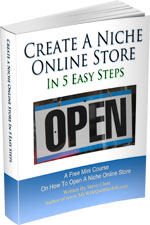
Ready To Get Serious About Starting An Online Business?
If you are really considering starting your own online business, then you have to check out my free mini course on How To Create A Niche Online Store In 5 Easy Steps.
In this 6 day mini course, I reveal the steps that my wife and I took to earn 100 thousand dollars in the span of just a year. Best of all, it's absolutely free!

